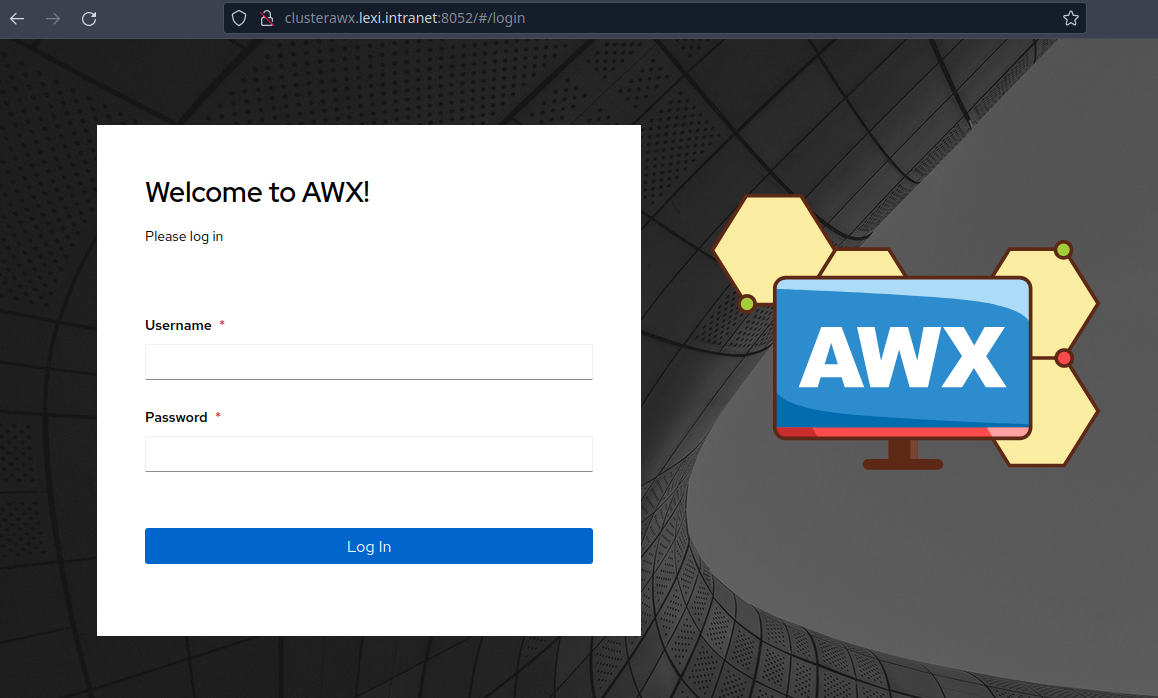Installing AWX Operator
helm repo add awx-operator https://ansible.github.io/awx-operator/
Installing the operator within our cluster via helm
helm install ansible-awx-operator awx-operator/awx-operator -n awx --create-namespace
Now let us validate that the operator pod –which will later install the components that we need– is in Running state:
[alexia@andromeda ~] $ kubectl get pods -n awx
Due to the fact that k3s comes with a default storage class for creating volumes within the machine where it runs, the following step is used to define a Volume Claim and a Custom Resource Definition. If we would like to explore the complete list of installed AWX’s crds we could run
kubectl get crds awxs.awx.ansible.com -o yaml
For our use case we will do this by creating a .yaml file. For example awx_manifest_for_operator.yaml
---
apiVersion: v1
kind: PersistentVolumeClaim
metadata:
name: postgres-13-ansible-awx-postgres-13-0
namespace: awx
spec:
storageClassName: local-path
accessModes:
- ReadWriteOnce
resources:
requests:
storage: 10Gi
---
apiVersion: awx.ansible.com/v1beta1
kind: AWX
metadata:
name: ansible-awx
namespace: awx
spec:
service_type: nodeport
postgres_storage_class: local-path
Now it can be applied against the cluster running:
kubectl apply -f awx_manifest_for_operator.yaml
After a moment, the awx namespace should have the pods being excecuted
[alexia@andromeda ~] $ sudo kubectl get pods -n awx
NAME READY STATUS RESTARTS AGE
ansible-awx-postgres-13-0 1/1 Running 6 (4m25s ago) 39h
ansible-awx-web-7d458cd684-v458k 3/3 Running 20 (4m25s ago) 39h
ansible-awx-task-6dfd5dcdb7-4fz7q 4/4 Running 27 (4m25s ago) 39h
awx-operator-controller-manager-64df47d889-wkp5w 2/2 Running 19 (4m25s ago) 40h
[alexia@andromeda ~] $
Lastly, we expose the deployment of AWX
kubectl expose deployment ansible-awx-web --name ansible-awx-web-svc --type NodePort -n awx
We need to obtain the admin password for initial login (If you are not using domain credentials via LDAP et al)
Username will be admin, and the password can be obtained by excecuting the following command:
kubectl get secret ansible-awx-admin-password -o jsonpath="{.data.password}" -n awx | base64 --decode ; echo
Store it somewhere safe, and change it once you have logged in.
We need to obtain the port for the web interface. We can look this up in several ways, but since we’re working with kubectl, a quick way would be just by listing the svc:
[alexia@andromeda ~] $ sudo kubectl get svc -n awx ansible-awx-web-svc
NAME TYPE CLUSTER-IP EXTERNAL-IP PORT(S) AGE
ansible-awx-web-svc NodePort 10.43.66.87 <none> 8052:30087/TCP 53m
And that’s really it. We can now login to AWX via web interface and start to migrate or setup our awx cluster.
